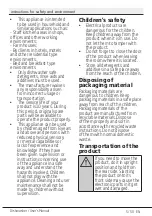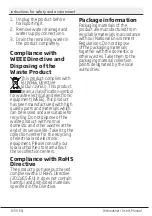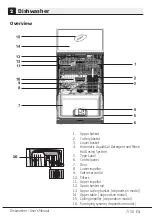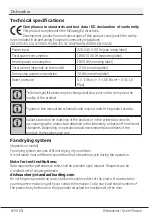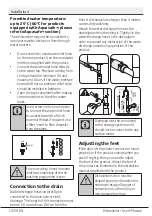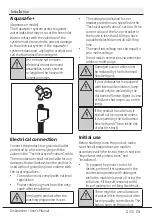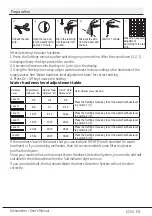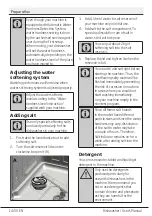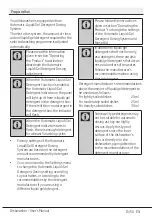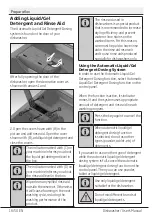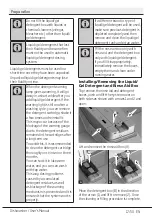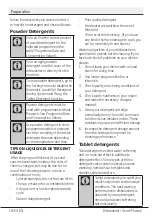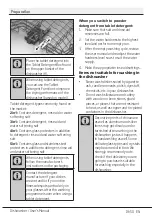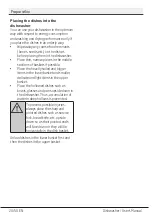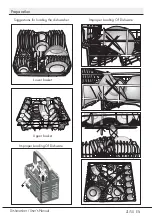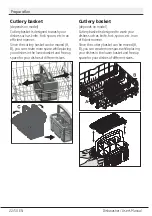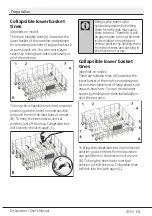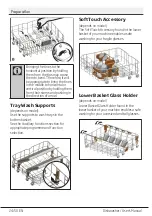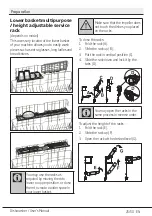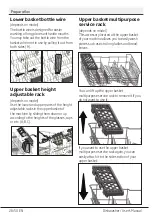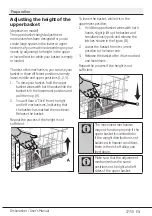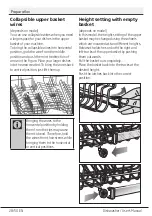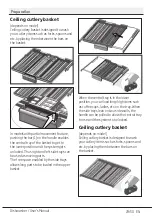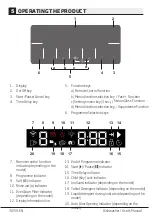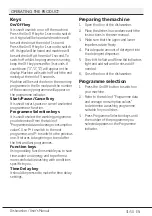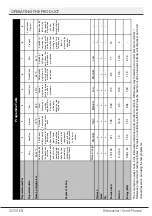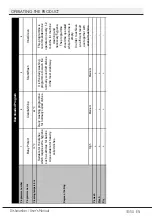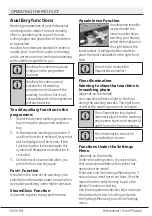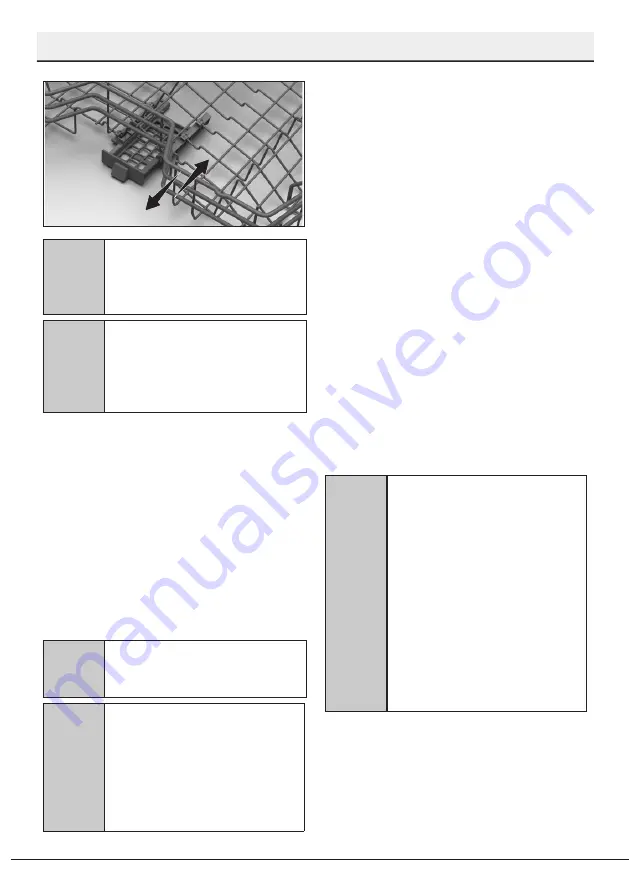
Dishwasher / User’s Manual
19 / 50 EN
PreparatIon
A
C
Place the tablet detergent into
the Tablet Detergent Box found
on the upper basket of the
dishwasher (A).
C
When using tablet detergents,
you can use the Tablet
Detergent Function to improve
the drying performance of the
dishwasher (based on model).
Tablet detergent types commonly found on
the market:
2in1:
Contains detergent, rinse aid or water
softening salt
3in1:
Contains detergent, rinse aid and
water softening salt
4in1:
Contains glass protectors in addition
to detergent, rinse aid and water softening
salt
5in1:
Contains glass and stainless steel
protectors in addition to detergent, rinse aid
and water softening salt
C
When using tablet detergents,
follow the manufacturer's
instructions on the packaging.
C
Contact the detergent
manufacturer if your dishes
are wet and/or if you notice
limescale spots particularly on
your glasses after the washing
programme is over when using a
tablet detergent.
When you switch to powder
detergent from tablet detergent:
1. Make sure that salt and rinse aid
reservoirs are full.
2. Set the water hardness to the highest
level and perform an empty run.
3. After the empty washing cycle, review
the user manual and readjust the water
hardness level so as to suit the water
supply.
4. Make the appropriate rinse aid settings.
Items not suitable for washing in
the dishwasher
•
Never wash dishes soiled by cigarette
ash, candle remnants, polish, dyestuff,
chemicals, etc. in your dishwasher.
•
Do not wash silverware and cutlery
with wooden or bone stems, glued
pieces, or pieces that are not resistant
to heat, as well as copper and tin-plated
containers in the dishwasher.
C
Decorative prints of chinaware
as well as aluminum and silver
items may get discoloured or
tarnished after washing in the
dishwasher just as it happens
in handwashing as well. Some
delicate glass types and crystals
may become dull in time. We
strongly recommend you to
check if the tableware you are
going to purchase is suitable
for washing especially in the
dishwasher.

